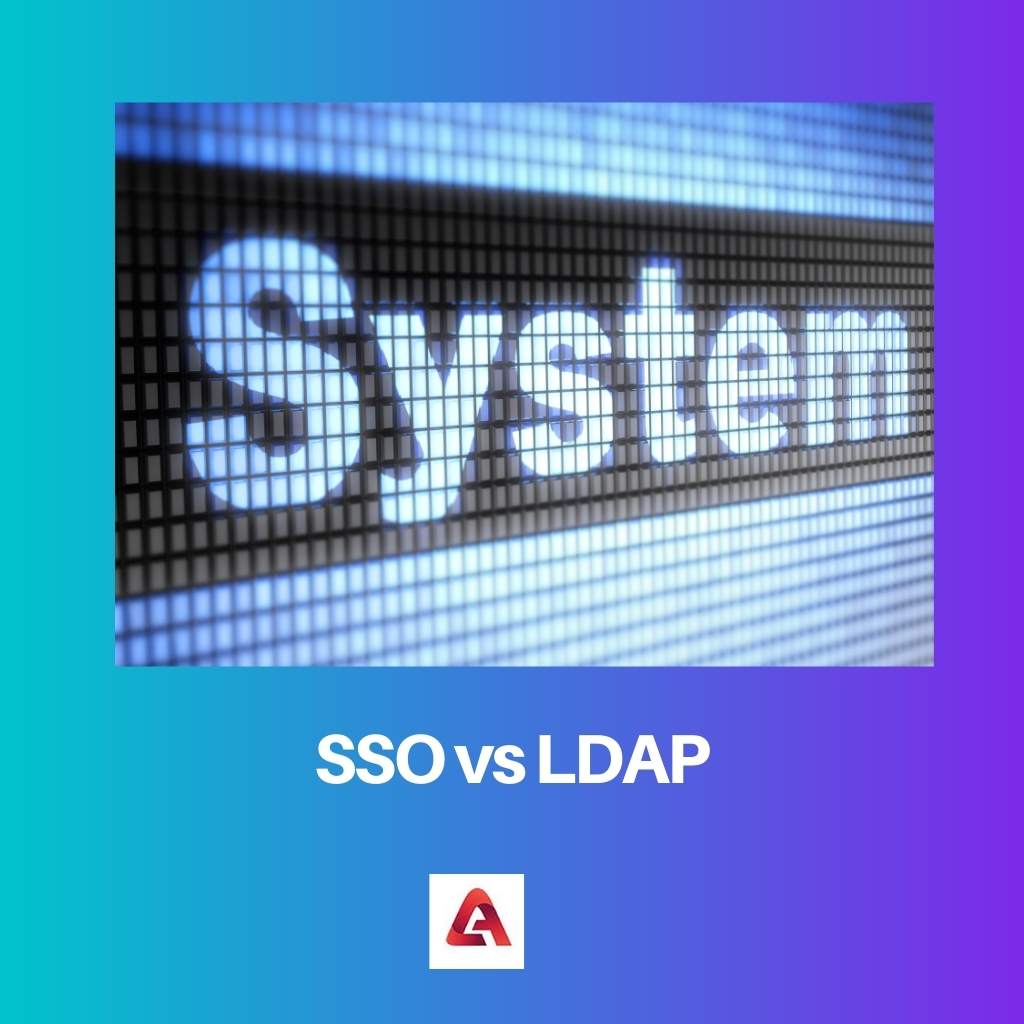When a company grows into a big enterprise with a significant profit annually, with an increase in revenue, the company in growth and complexity rises.
Key Takeaways
- SSO (Single Sign-On) is a technology that allows users to log in to multiple systems or applications with a single set of credentials. At the same time, LDAP (Lightweight Directory Access Protocol) is a protocol to manage user authentication and authorization.
- SSO eliminates the need for multiple usernames and passwords, while LDAP provides a centralized database for storing user information.
- SSO and LDAP can be used together to provide a secure and seamless user authentication experience.
SSO vs. LDAP
SSO (Single Sign-On) is a verification process through which a user can access various applications with a single credential set. LDAP (Lightweight Directory Access Protocol) helps in managing the user verification process. It also provides a database where information related to the users can be stored. It accesses the data from the server through an application.

SSO is the short form of a single-sign-on system. The system helps the user by logging in once to access multiple systems.
LDAP is the short form of Lightweight directory Access protocol. This is an adaptation of an x500, a directory system for complex enterprises.
Comparison Table
| Parameters of comparison | SSO | LDAP |
|---|---|---|
| Meaning | SSO is a process wherein the authentication occurs by a user having the accessibility of multiple systems through a single login. | LDAP is a process wherein protocol authentication occurs using an application that helps receive information from the server. |
| Work | The SSO works like an application. | The LDAP works like a protocol for the user. |
| Full form | The complete form of SSO is the single sign-on system. | The complete form of LDAP is the Lightweight Directory Access protocol. |
| Function | SSO is whole significant system software for access for providing access to systems. | The LDAP is a part of the SSO system. |
| Release date | The SSO system started back in June 2012. | The LDAP system was started in 1993. |
What is SSO?
SSO is the short form of a single-sign-on system. The system helps the user by logging in once to access multiple systems.
In SSO, each system uses a different kind of mechanism for working.
Therefore during the initial authentication, the system uses these different mechanisms to operate multiple systems with one go-through credential.
The software installed in SSO transfers this information simultaneously to the security server, which follows the security server to send this same message to the LDAP server.

What is LDAP?
LDAP is the short form of Lightweight directory Access protocol. This is an adaptation of an x500, a directory system for complex enterprises.
The clients using their servers as LDAP can ask for their information from servers that run on LDAP in various ways. This information is later transferred to an organized set of directories.
Apart from information coming through contacts, this server is also used to have information about certificates using encryption, etc. The system of LDAP is also used in SSO software.

Main Differences Between SSO and LDAP
- The SSO system started in June 2012 worldwide; however, the LDAP system was started in 1993.
- The full form of SSO is the single sign-on system, and on the other hand, the complete form of LDAP is the Lightweight Directory Access protocol.


The comparison with the release dates of SSO and LDAP is particularly interesting, as it gives insight into the evolution of these technologies over time.
It’s intriguing how the development timelines of SSO and LDAP reflect the progression of user authentication needs and priorities.
The historical context of these technologies contributes to our understanding of their significance in modern enterprise systems.
The coexistence and collaboration between SSO and LDAP are key in advancing the way we approach user authentication and authorization.
The partnership between these two technologies holds great promise for enterprises looking to streamline their authentication processes.
SSO and LDAP are two very interesting and useful technologies that give way to a lot of possibilities for the future of technology. The possibility of a seamless user authentication experience is fascinating.
It’s definitely exciting how these technologies are revolutionizing the way we interact with systems and applications.
The historical context and technical nuances of SSO and LDAP shed light on their pivotal roles in shaping modern user authentication paradigms.
The interplay between the functionalities of SSO and LDAP highlights the intricate mechanisms underpinning user authentication protocols.
The evolution of SSO and LDAP underscores the iterative process of refining user authentication practices over time.
The future capabilities of SSO and LDAP in advancing user authentication are promising, giving rise to a more efficient and secure user experience.
I’m intrigued by the scope of innovation that SSO and LDAP bring to the table, and their potential for future developments.
There are indeed significant differences between SSO and LDAP, and it’s important for enterprises to understand how these technologies work together to offer a seamless and secure user experience.
The distinctions between the two systems are crucial for implementing the most effective user authentication strategies.
The nuances of SSO and LDAP are a testament to the depth of thought that goes into creating secure and standardized user authentication processes.
The intersection of SSO and LDAP offers a comprehensive view of the multifaceted nature of user authentication mechanisms.
The detailed comparison between SSO and LDAP serves as a valuable resource for understanding the underlying mechanics of user authentication technologies.
The implications of SSO and LDAP in the realm of user authentication are vast, and it’s clear that they play complementary roles in providing a robust authentication ecosystem.
Understanding the function and interaction of SSO and LDAP is essential for harnessing the full potential of these technologies.
The synergy between SSO and LDAP presents an exciting frontier for enterprises seeking effective user authentication solutions.
The level of growth and complexity in the context of increasing revenue is something that we need to pay attention to. SSO and LDAP are paving the way for a more secure and efficient authentication process.
It’s great to see how these technologies are shaping the landscape of user authentication in a way that’s truly beneficial for enterprises.
The blend of security and efficiency offered by SSO and LDAP is indeed remarkable.
The comparative analysis of SSO and LDAP offers a comprehensive understanding of their respective roles in enhancing user authentication across diverse enterprise systems.
The depth of insight provided by the article illuminates the symbiotic relationship between SSO and LDAP in the realm of user authentication.